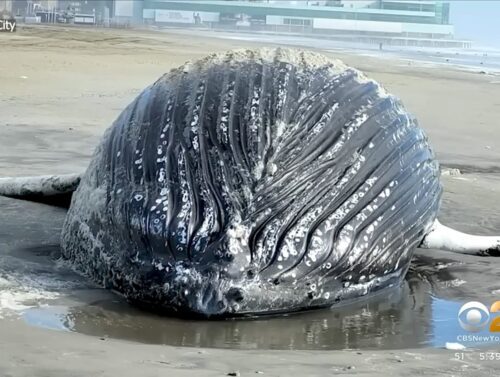
The California Public Employees’ Retirement System for state employees lost 71% of its $468 million investment in a clean energy and technology private equity fund, state records show, but CalPERS won’t explain how. [emphasis, links added]
These losses are a major problem for California taxpayers, who, at least for now, are the backstop for underfunded state pensions, but also for state employees who trust CalPERS to responsibly manage their retirement plans.
CalPERS says its pension benefits are only 79% funded, leaving the state and its taxpayers on the hook for the other 21%. According to a recent report from Reason Foundation, CalPERS’ pension shortfall is approximately $180 billion.
CalPERS’ overall returns for the 2024-2025 fiscal year were 11.6%. While its private equity returns were 14.3%, its public equity investments were 16.8%.
“Returns were similar … so why go through all the trouble — if you can get these kinds of returns on the public markets, why bother with all the complexities and the illiquidity involved in private equity?” asked Marc Joffe, a public finance expert and visiting fellow at the California Policy Center, in an interview with The Center Square regarding the performance of CalPERS’ private and public equity investments.
CalPERS committed $465 million to the private equity CalPERS Clean Energy & Technology Fund (CETF) in 2007, ultimately paying in $468,423,814.
Since then, the cash out and remaining investment value of the investment fund have declined to $138,045,373, as of March 31, 2025. That’s a loss of 71%, or more than $330 million, for which private equity firms were paid at least $22 million in fees and costs.
CETF losses show the “combined dangers of private equity and ESG investment — you have a very opaque investment choice that appears to have been chosen because of its green credentials, and yet it’s now generated a huge loss for taxpayers and retirees,” said Joffe regarding CETF’s losses and focus on “clean” energy and technology.
“CalPERS would be better off focusing on a diverse portfolio of publicly-traded equities to get better long-term returns.”
In response to an inquiry by The Center Square, CalPERS defended its private equity strategy and shifted blame for CETF’s performance to prior management.
“The CalPERS Clean Energy & Technology Fund dates back to 2007, before the pension fund’s board and staff worked together to tightly focus our private equity strategy,” wrote CalPERS spokesperson Abram Arredondo to The Center Square. “Since then, we have diversified our investments to reduce risk, selected the highest performing asset managers, and lowered fees by entering into co-investments.
“Since that time [2022], we have reduced fees by 10 percent,” continued Arredondo. “The private equity class has been our best performer for the past 20 years, and we believe our members deserve access to its income-producing opportunities.”
To make up for the pension’s funding gap, CalPERS has multiplied its investments in private equity, which, at least on paper, have outperformed its other assets.
However, financial experts warn that these reported gains are based on “guesstimates.”
Unlike publicly traded stocks and bonds that have their prices updated in real-time on the public market, it’s not exactly clear how much a private equity investment is worth until it’s sold.
In 2021, CalPERS increased its private equity target from 7%, that is, the portion of its funds invested in private equity, to 13%, and in 2024 increased the target even higher to 17%.
Unlike public equity investments, which can be made by anyone, private equity involves buying assets that aren’t publicly traded.
Private equity firms generally buy large portions of or buy entire companies, then try to sell those companies to another, usually private buyer, at a profit by cutting costs and growing revenue.
Private equity managers earn fees, among others, on money managed, and a large share of the profit over a certain level. These fees, estimated to cost CalPERS 6-7% per year on its private equity investments, mean that these private equity investments have to significantly outperform the broader market to overcome the fees, let alone make up for the elevated risk.
The Center Square filed a public records request seeking more details on the fund’s losses, including management contracts with the firms investing CalPERS’ money, and the investments made with CalPERS funding by those firms.
CalPERS declined to release the information, aside from sharing already-public records, citing a state law exempting many records for alternative investments — such as private equity — from many public disclosure requirements.
“The public should have a right to know how public money is being invested,” said David Loy, legal director for First Amendment Coalition, a government transparency and free speech nonprofit, in an email to The Center Square. “This is a serious transparency concern if the public doesn’t have visibility into how public money, especially pension funds, [is] being invested and to what degree of risk.”
For government pensions, where losses are ultimately borne by the state and its taxpayers, public finance experts say private equity is too expensive, too risky, and doesn’t provide enough transparency.
Had the money put into the CETF been passively invested in an S&P 500 index fund, with dividends reinvested, the fund would have been worth approximately $3 billion.
Read rest at The Center Square



















As of mid-2025, CalPERS manages approximately $556 billion to $558 billion in assets under management
$300 million is 0.05%
So losing $300 Million is no big deal to you? Did you notice the little detail that CalPERS is underfunded so losing $300 Million doesn’t help them. And did you notice what percentage was lost in that fund? Just a mere 79%? It seems that CalPERS doesn’t understand what their fiduciary duties are for the retirees and those still working in state jobs that will depend on CalPERS for their retirement income. Amazing that you find this something to defend.
The total amount of unfunded/worthless pension promises in California is around $800B. The money didn’t exist when the lies were told, the money doesn’t exist now & it won’t magically exist in the future. The State is almost $3Trillion in debt.